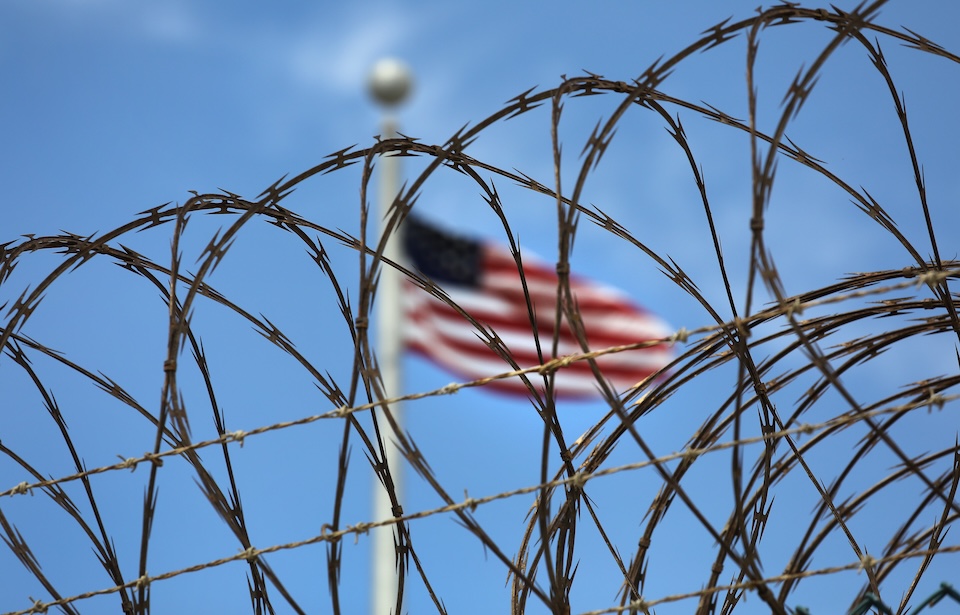In 2019, there were 1,380,427 people locked up in U.S. prisons, including those held in military detention centers. Over the last century, the way prisoners are treated has changed a lot. These days, federal prisons are designed to follow a structured system that encourages inmates to think about their past choices, learn new skills, and get ready to rejoin society once they’re released.
Federal and military prisons might look alike in some ways, but they’re run by different rules and serve different goals. As a result, the experience of serving time can vary depending on the type of facility an inmate is in.
What is a military prison?

Military prisons are usually used to hold prisoners of war (POWs), unlawful combatants, individuals who threaten national security, and military personnel convicted of serious crimes. These facilities are different from regular prisons and generally fall into two categories: penal, which focus on punishment or rehabilitation, and security-focused, which hold people considered a threat.
The U.S. military’s prison system is organized into three tiers, with a total of 59 facilities. Level One is the lowest and mainly includes inmates before or after their trials who have sentences of one year or less. Level Two holds the majority of prisoners, with sentences of up to seven years. Level Three uses the high-security prison at Fort Leavenworth, Kansas to house the most dangerous offenders.
Military prisons have changed a lot since they first opened
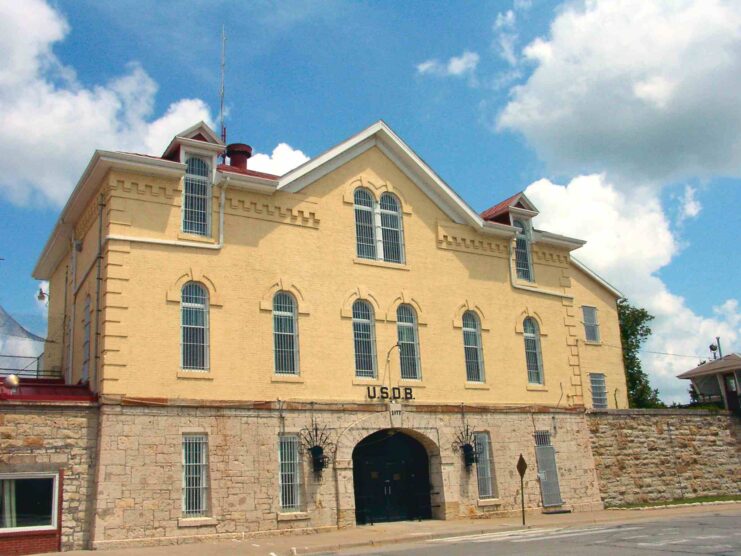
Since the first military prison was established in 1874, both the operations of these facilities and the types of inmates they house have evolved. In the early years, offenses like desertion were more common. However, after the military draft ended in the 1970s, the focus shifted toward more serious crimes. By 2002, the most frequent offenses in military prisons included assault, drug possession, and drug trafficking. Many inmates were White men with high school diplomas, and most had committed crimes against other individuals.
Military prisons have remained effective largely due to their highly structured environment. These facilities often offer job training, counseling, support programs, and even alternative approaches like military-style boot camps. Over time, these strategies have served as a model for the federal prison system, influencing the creation of similar programs for civilian inmates.
But how does life in a military prison actually compare to time spent in a civilian facility? Let’s take a closer look.
The facilities differ between military and civilian prisons
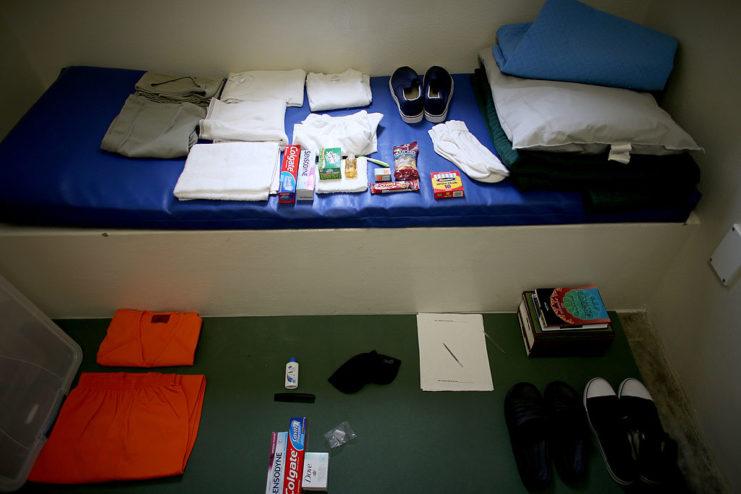
Military prisons follow the same standards and protocols as the rest of the Armed Forces. Just like in basic training, inmates are required to keep their areas clean and organized. If they fail to do so, they’re disciplined right away. Because of strong military funding, these facilities are usually in good condition and well cared for.
In contrast, civilian prisons don’t receive the same level of support. While inmates are also expected to keep their living spaces clean, there’s less structure, less discipline, and less funding to support those efforts. As a result, cleanliness often takes a back seat in many federal prisons.
Military prisons follow a strict daily schedule
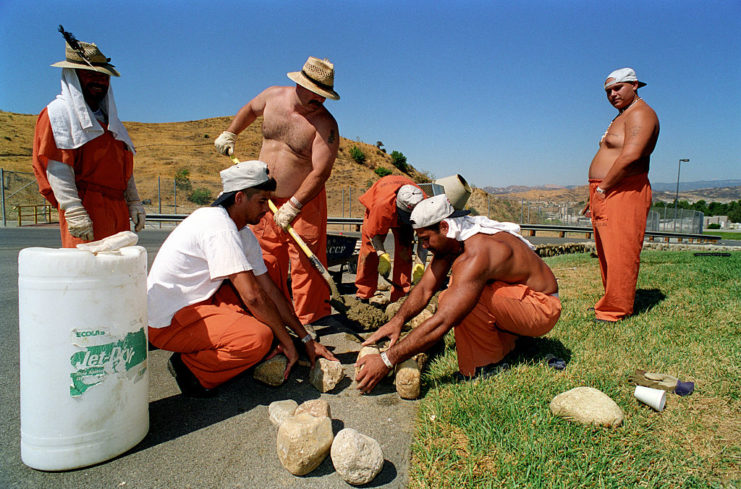
Military prisons begin their day at 6:00 AM with roll call. In typical military fashion, inmates follow a strict schedule that consists of meals, maintenance and workshops. Weekends feature more time for relaxation and recreation.
Military prisons have better food
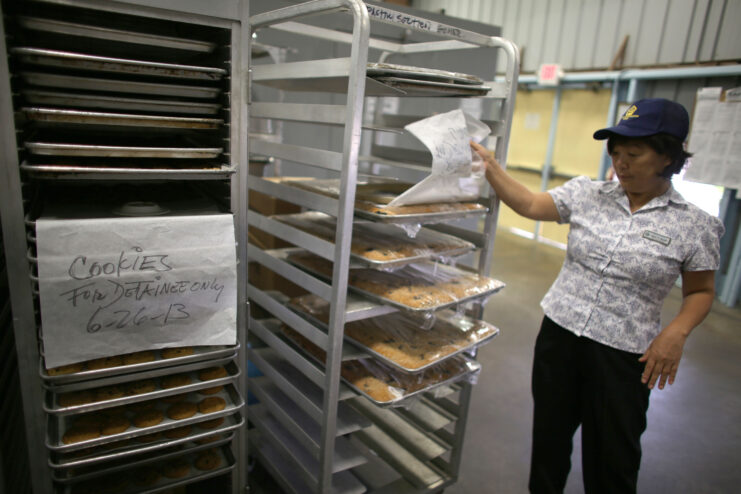
Food is a big part of prison life, and military prisons are known for having much better meals than civilian facilities. Guards in military prisons have strict rules in place that prohibit inmates from taking food outside of the dining hall, while civilian inmates have little to no oversight regarding this, allowing for trading to occur. Federal institutions also have access to a commissary that allows prisoners to purchase food and other goods.
Civilian prison guards are more likely to be corrupt
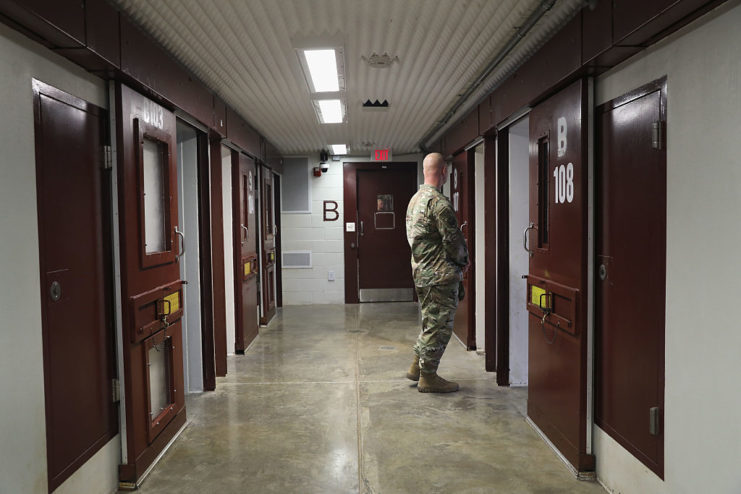
Guards stationed at military prisons are typically military police or from a local security forces unit. As uniformed personnel, they have the same obligations as inmates to uphold order and maintain discipline. Since they’re trained to provide services to all branches of the military, they usually treat inmates with respect.
Unfortunately, many civilian prisoners clash with corrupt guards. There are “chill” ones who complete their rounds and retire to the break room, as well as overly-corrective guards who assert their authority through intimidation, building resentment among inmates. Some guards even abuse their power and take advantage of prisoners, something that happens less often in a military setting, where both guards and inmates are treated equally.
Military prisoners aren’t allowed to salute their fellow officers
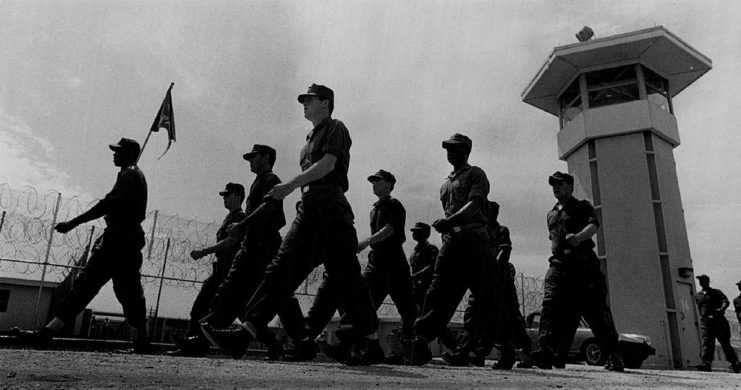
While most aspects of life in a military prison are surprisingly similar to life in the service, one important tradition is actually prohibited: the salute. Military inmates aren’t allowed to salute officers; doing so is actually a punishable offense. Prisoners aren’t allowed to salute officers because it’s seen as inappropriate for a superior to return the gesture.
Ranks are removed for inmates
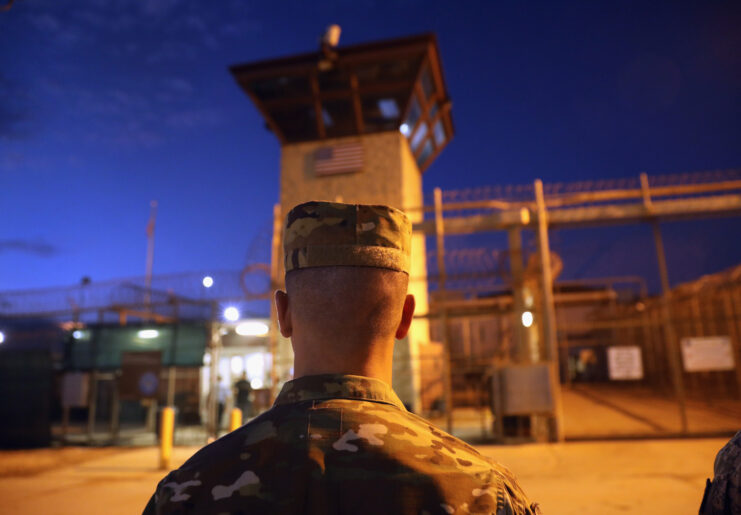
Ranks are also removed upon imprisonment. In 2012, Lt. Col. Ken Pinkela was found guilty of felony assault, willful disobedience, abusive contact and conduct unbecoming of an officer. He was taken to the US Disciplinary Barracks at Fort Leavenworth to serve out his sentence.
As one of the highest-ranking inmates, Pinkela struggled to come to terms with his loss of rank, which he’d worked for 20 years to achieve. “In Leavenworth, your former rank carries no weight,” he told The Marshall Project. “On the day I went in, the silver oak leaves emblazoned on my uniform that signaled what I was were taken away from me, and I became an inmate – a prisoner to a country that I swore to protect and serve.”
Use of solitary confinement
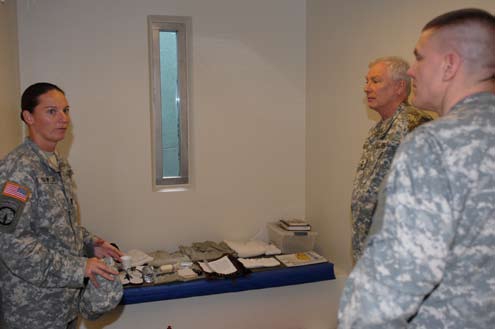
One of the more harrowing parts of imprisonment is solitary confinement – or “the hole.” The punishment is used in both military and civilian prisons if an inmate disobeys an order or commits an offense. According to Quartz, solitary confinement in the US is “inflicted upon at least 80,000 inmates, including juveniles, often for months or years.”
No human interaction
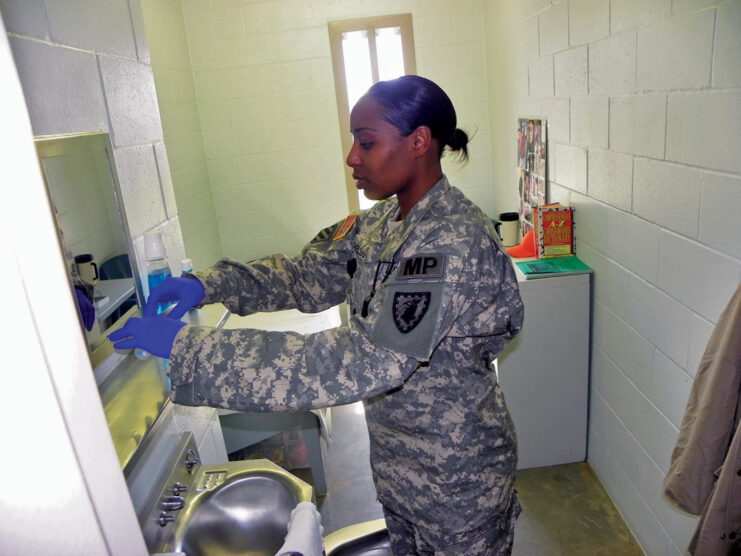
Military prisoners can be placed in solitary for up to six months, where they sit in an eight-by-seven-foot room with a toilet, sink, bed and light. They receive no human interaction, with food shoved through a small slot in the door. Sometimes, all it takes to be thrown into solitary is having old toothpaste.
Former US Army soldier Chelsea Manning, who was imprisoned at Fort Leavenworth, was threatened with indefinite solitary confinement for possessing expired toothpaste, dropping food on the floor, and allegedly having copies of Vanity Fair and Cosmopolitan.
Rehabilitation of prisoners

One of the main objectives of prison is to rehabilitate criminals and prepare them for reentry into society. Rehabilitation programs are especially important for military prisoners who will be given a dishonorable discharge upon their release, as they’ll need a new skill or trade upon reentering the civilian world. Military prisons offer training for inmates in carpentry, auto repair, cooking, hospitality and more.
More from us: Here’s Why Saddam Hussein’s Plan to Engage the Coalition in WWI-Style Trench Warfare Failed
Civilian prisons also provide inmates with opportunities for learning and growth. Resources to obtain high school diplomas, learn skilled trades and special programs for substance abuse are provided. Inmates can also take college courses, at their own expense. Unfortunately, these opportunities are not as readily available to civilian prisoners as they are to military inmates.
